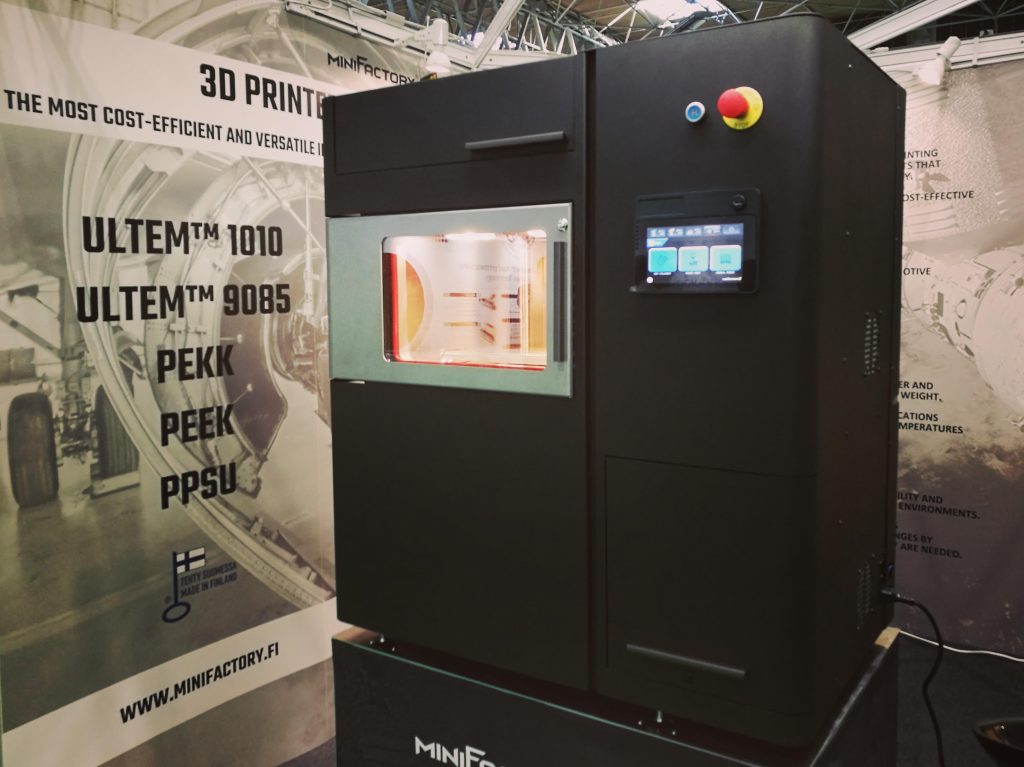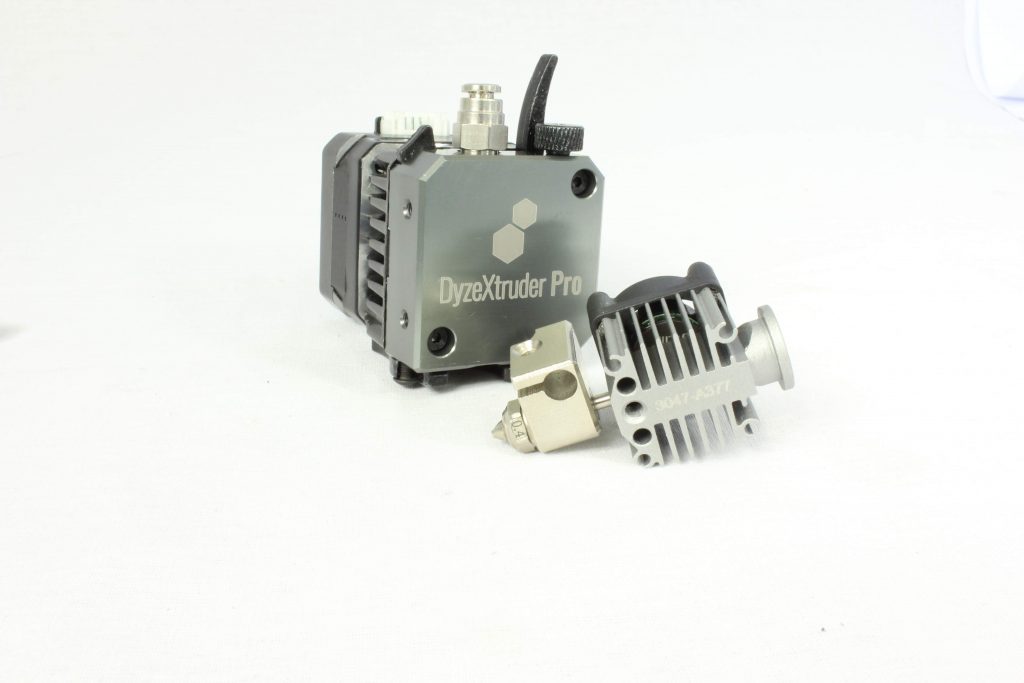Desktop 3D printing was supposed to be the next big thing. Due to over-claim and a response from the media that was far too enthusiastic, we were propelled to fill shoes that we simply could not fill. At the time when the hype was at its apex, desktop 3D printers worked intermittently. Kits took approximately 40 hours to assemble and half of all prints failed. At the same time “everyone was going to get a 3D printer.”
This disconnect fueled by several P.T. Barnums in our industry meant that many still see our technology as something cute that didn’t quite happen as anticipated. Our Editor-in-Chief, Michael Molitch-Hou, asked me what it would take now to redress the balance? What would we have to do in order to make consumer 3D printing viable?
This article catalogues the requirements. First off, I’m intentionally not using the word “mainstream” here. In our current world, the very idea of mainstream is under threat with products, media consumption, and brands all fragmenting into teeny filter bubbles. Thinking of mainstream, therefore, could distort us.
At the same time, tens of millions of dental bridges and crowns, as well and millions of hearing aids, are being made with 3D printing. Three million or more 3D printers may have been sold to date, as well. So, either we are, in fact, already mainstream or there’s no point in discussing mainstream.
Now, will we ever be as popular as phones or laptops? No one I know has even dared dream it, nor do we contemplate this right now. But, even at our zenith, we’ll never all need one in the same way as we need to be connected to the aether, right?
3D Printers

Essentially, I’d like this for $300.
Reliable: 3D printers need to become more reliable. Reliability has improved significantly, but is still very low. Prints fail often due to many reasons, some not understood by the user. Consumers are used to devices working all the time, not something that works as haphazardly.
Repeatable: 3D printers need to become more repeatable. The differences between the same part made on the same printer with the same settings need to narrow. The differences of different printers printing the same files also need to narrow.
Well-Made: 3D printers need to become more well made. Manufacturing is improving, but, with 3D printing, misplaced or incorrectly torqued components, for example, can lead to differences in the printer. Misplacement or lack of calibration for sensors, for example, leads to incorrect reading of temperatures.
Safer: 3D printers need to become much safer, with electrical systems in particular less vulnerable to fires and failure.
Manufacturable: 3D printers need to be designed for automated manufacturing, so we can lower the costs of making them.
Better Nozzles: Nozzles need to be ejectable, replaced with a single twist, or we have to invent a new component—a “nozzle sleeve” that itself is easily replaceable. We need to make nozzle clogging a one twist replace issue, at best.
Better Filament Tubes: Bowden tubes have to be replaced by a better material or solution, since Bowden tube bending and breakage by operators accounts for a disproportionate amount of print failures.
Better Bed Adhesion: Bed adhesion platforms/sheets have to work properly and be easy to use.
Better Motion Control: We need to use another motion control system, or at least better stepper motors. The variance in stepper motor torque between systems and between steppers is too high.
Better Parts: Components need to be of better quality. Several suppliers make systems that barely make it through a year. This is unacceptable.
Quieter: 3D printers need to be quieter. Some are far too loud to run in the background.
Better Feeder: We need to somehow redesign the feeder to a new system that works much better than the current paradigm. This deceptively simple part leads to too many failures.
Certifications: The proper certifications should be sought not just by some vendors but by all to make sure we can operate these devices unattended, for example.
Fewer Vibrations: 3D printers need to vibrate less, as this causes print distortions.
Enclosures/Air Quality
Temperature Control: 3D printers need to be enclosed and heated so that the temperature is properly managed, as is heat bleed. This has been partially a patent issue, but only if you know what temperature your bed, chamber, and nozzle are could you even begin to coherently extrude anything. External well-calibrated temperature sensors need to measure accurate nozzle temperatures. Nozzle temperatures are often off by 10% in different examples of the same printer model. This means that you can’t exchange settings or that two people can’t work together solving a problem.

Hi, my name is Gonk.
Air Filters: 3D printers need to be enclosed with HEPA and carbon filters. TPU, ABS and other materials on the desktop can be problematic. But, generally for many materials, low-cost and dangerous additives and colorants may have adverse affects, as well. We need to grow up, people, and realize we can’t release plastic fumes into schools under any conditions.
Air Flow: Air flow needs to also be well managed. Flows from air conditioning systems or laminar flows across the bed regularly distort prints.
Filament
Moisture: We need to keep filament dry and free from contact with the air. So, either we have to develop drying solutions, storage solutions, or better cartridges that keep the filament moisture-free at all times.
Standard Sizing: Filaments need to be the right size. A lot of low-cost filament brands do not have control over their filament diameter or roundness. To not clog the machine (and to rip off consumers) they undersize their filament. This means that your settings will drift off based on undersized filament and you’ll get a wrong idea of settings when the right filament comes along. Paradoxically this means that you may believe that the correct filament is the tricky one.

Shape: Filament needs to be rounder as to not clog Bowden tubes. Filament ovality is problematic with many vendors and leads to clogs and inconsistent extrusion.
Material Safety: Filament needs to be ROHS compliant and the material needs to match the MSDS. The fact that I even have to say this is problematic for us.
Food Safe: Filament will need to be food safe and consumer use certified for end use parts which it is not at the moment.
Spools: The filament spool situation has to be solved in some manner so that we can in an environmentally better way power our printers.
Pricing: Filament will have to cost $4 a kilo converted over polymer pricing in order to enlarge the space of the makable and make many business cases possible.
Settings Standards: On every printer, for every material, the settings should be known. We can do this through one central lab that dials them in or something like this but the endless settings hockey has to stop.
Files
Format: Files should all be 3MF, not STL.
Honor Designers: Files should attribute makers directly so we reward and recognize those who design, engineer, and make. File repositories should reward or bring recognition to in some way those who innovate.
Direct Printing: Right-click to print from the file repository or any file.
Optimization: All settings should be optimized. This optimization should be for the particular printer, material, and part in question in keeping with the constraints and all known optimizations of that part.
Simulation: CAD should simulate the 3D printed part including time and cost and parts can be queued until they can be printed efficiently.
Authoring/CAD
Easy: CAD itself should be like Minecraft, but faster and able to get you organic shapes. I’ve said this before but everyone could publish in the 90s; they just had to learn HTML. Few did. Everyone could publish later, if they learned Dreamweaver; a few million did. Everyone could publish with blogs, but only ten million did for a while. Billions started publishing when it became as easy as typing with Twitter, Facebook etc.
Drawing: CAD should let you draw and form shapes in the air before your camera.
3D Scanning: 3D scanning should be as easy as holding a thing up in front of your camera. 3D scanning of rooms, objects, people, landscapes, buildings of all colors, materials, and textures should be as easy as taking a selfie.
3D Scan Quality: The current iPhone Max scanning capability will need to work as well as today’s high end $100,000 scanners used by industry. But, whereas each 3D scanner model is optimized for a use case (e.g., a room scanner for architecture, a QC scanner for metal parts, a scanner for larger buildings) it will have to work equally well for all of these cases. In other words, Apple has to make 3D scanning as easy as video is now.
File Handling: File handling, resurfacing and editing has to be simple and easy to understand.
Apps: Apps need to make customization and mass customization and 3D creation accessible and fun.
If we have all of those things are true then we could hope for many taking up 3D printing.
Subscribe to Our Email Newsletter
Stay up-to-date on all the latest news from the 3D printing industry and receive information and offers from third party vendors.
You May Also Like
3D Systems Pushes New Tech and Partnerships at Formnext
As one of the pioneering companies in additive manufacturing (AM), 3D Systems remains a key player to watch at Formnext 2024, where it is showcasing major partnerships, innovative technologies, and...
Formnext 2024 Roundup: Pellet 3D Printing, Advanced Software, & More
Europe’s leading additive manufacturing trade show, Formenxt 2024, comes to a close today. There have been many product, material, software, and other business announcements during the event, and we’ll summarize...
Formnext 2024: Worldwide Release of Meltio Engine Blue Robotic Arm Integration Kit
Formnext 2024 is currently taking place in Frankfurt, and as you would imagine, the announcements of new machines, materials, software, and more have been flying fast and furiously into our inboxes....
Formnext 2024 Day Two: Stand Up
The complaints about the film The Longest Day being set on a beach in France pale in comparison to experiencing Formnext. By the second day, it already feels like the...



































